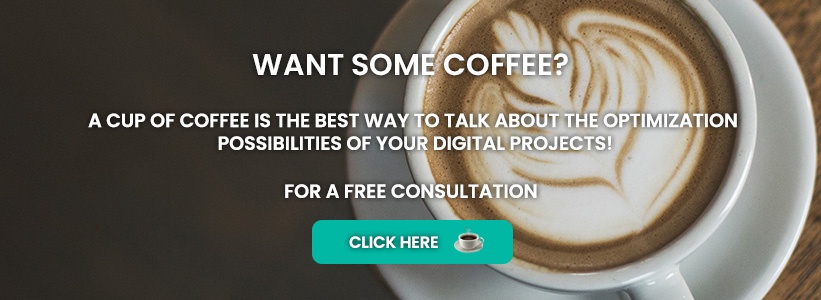The foundation for editorial work and long-term outlook: The Editorial Concept has a wide variety. René Neubach (Content Glory CEO), Maren Waffenschmid (Project Manager) and Carina Sitz (Content Creator) discussed and defined the function of the Editorial Concept.
Linking the strategic and the operational work
The editorial workflow and content creation are only possible on the basis of three phases:
1. Phase: Strategic considerations noted in the Content Strategy Paper.
2. Phase: Tactical phase which deals with the Editorial Concept and the Content Governance Paper.
3. Phase: Operational phase including editorial meetings, Content Calendar and Content CreationRené: "The Content Governance Paper is the transcript of what is mentioned in the Content Strategy and in the Editorial Concept". Therefore it contains the tactical side of the core pieces of the Content Governance Paper: Objectives, personas, language, photo editing as well as clusters and series. Content clusters contain all the different thematic focuses of a blog, while article series take apart the individual topics.
While the Editorial Concept contains operational elements, it is located one level above the operational and links the strategic and the operative objective. The focus point of the tactical concept is the six-month planning with key topics that are portrayed as series. Articles then are designed in such a way that they complement each other and contain cross-references. The following is decisive for tactical planning:
-
Structure & publication data: Articles should be produced all at once, then published one at a time. When and in which order articles are posted, is based on the storytelling.
-
Including personas in the planning of series: Is a series aimed at one target group or at several? This question strongly determines the schedule of series of every cluster.
-
Half-yearly focal points: Put short-time focus on a specific cluster by setting half-yearly goals and focal points.
-
Regular revision: Updates should happen every four to six months. This allows for new impulses, reconsideration of plans and guarantees the topicality of clusters and series.
Communication concept with a goal
The Editorial Concept is a communication concept, with the difference that its strategic elements define a distinct output. "In addition to hard facts such as structure, strategy and process, it includes the softer side of content, such as style, tonality, values, approach and gender issues.", says Carina. The Editorial Concept defines all three dimensions of the content publication:
-
Format: Editorial, article, interview, statement (case studies, reports), newsletter, video, audio, graphics, discussion and much more
-
Channel: Platforms like blogs, vlogs, mailing, podcast, social media
-
Media type: Message, video, chat, webinar, audio
In the editorial concept, all decisions regarding format, media type and channel are approached in a structured and holistic way.
Content follows the target group's preferences – that’s how you select medium and channel
Three parameters are necessary for all further considerations of the Editorial Concept:
-
Target group: Who exactly is my target group?
-
Topics: Which contents are relevant?
-
Objective: What is my perspective on topics?
Based on these three parameters, it can be decided where content should lead to and which type of content will be published on which channel. Companies should be asking themselves: Which platforms does my target group prefere? Are there more page impressions from direct search or from social media? The choice of medium, i.e. article, video or presentation, depends on your target group's preferred channel.
If your audience prefers Facebook, this is the best channel for presenting your content, including content from your blog. Always make sure to adapt your content to the chosen platform. In the case of Facebook, this means using graphics, comics, GIFs and videos. Content curation, i.e. cross-references to the content of other providers, is also an excellent option. Most importantly: Target-group-specific approach counts – a lot of emojis, pictures and short video material, with a bit of a tongue in cheek tonality. The Facebook algorithm rates videos and images very well which increases your chances of reaching your target group.
Structure through projects
The Editorial Concept is created for the ongoing process and roughly determines the timing and characteristics of series. This operational phase is enriched with additional projects, often in form of campaigns. Although these projects support the overall goal noted in the Content Governance Paper, they primarily pursue their own goal. And all of this has to be integrated into the Editorial Concept aswell. "Campaigns need a subset from the Editorial Concept as their own concept," says René. "The overall goal remains the same, but the characteristics, such as channels, frequency, address, visual language – all these things change.”
For example, a campaign to raise awareness on chatbots can be aimed at topicality and at the same time contribute to the overall goal by drawing attention from the target group or increasing the organic site views through keywords.
Carina: "The Editorial Concept creates the infrastructure that can support various projects – these can be ongoing regular projects or campaigns and promotions. I drive on the same road, but there are other vehicles I can use." Say, you don't use the topic of chatbots as a campaign, but as a series of a cluster. While there won’t be a seperate goal, the pillar articles resulting from the series can be turned into a different product: A content offer, e.g. an eBook.
Space for reflection
For companies, the Editorial Concept offers a chance to define themselves. What values do I want to stand for? Do I want to stand up for something that doesn't exactly match my target group’s opinion? Maren: "This positioning is part of the strategy, but you also have to include it in the Editorial Concept and regularly ask yourself: Is that the way we want to express ourselves?”
Creative direction is another point of discussion. The outlook records how content production should develop over the next six months. The short time horizon, including editorial plan and editorial meetings, is left to the operational phase.
A good Editorial Concept must enable exactly that: Building the bridge between strategic and operational phase, yet tactically planning the storytelling of the article series. The final aim is to make visitors interested in reading and bringing them closer to the topics on the blog.
External perspective provides an overview
The effectiveness of the Editorial Concept also depends on the editorial overview. Goals of the company and those of the editorial team should be monitored and compared regularly. "The know-how of the company has to be consulted again and again. If you draw up a plan for six months, you need to think twice: Is there a cluster that needs to be focused on? Or is the cluster depleted?," says Maren.
In the day-to-day work of marketing, one quickly forgets this very area. That’s why one person should be responsible for guiding the discussion to strategy and tactic in the editorial meeting.
Appointing this job to a person outside your company can be an advantage. For experts it can be difficult to explain their specialist area in a simple way to the target group. Consulting a marketing agency not only means additional manpower, but guarantees a new perspective. This helps to create the link between company and target group.
For the day-to-day business, the Editorial Concept brings a stable foundation to the table. On this basis, channels can be selected according to the target group, planning and flexibility are maintained and, last but not least, content can be produced in a meaningful and targeted manner. Additionally: “Already writing down goals and reflections increases the chances of achieving a goal by 30%”, says René. Another point why investing time into a sound Editorial Concept really does pay off.
Credit: ©boonchok/Adobe Stock


